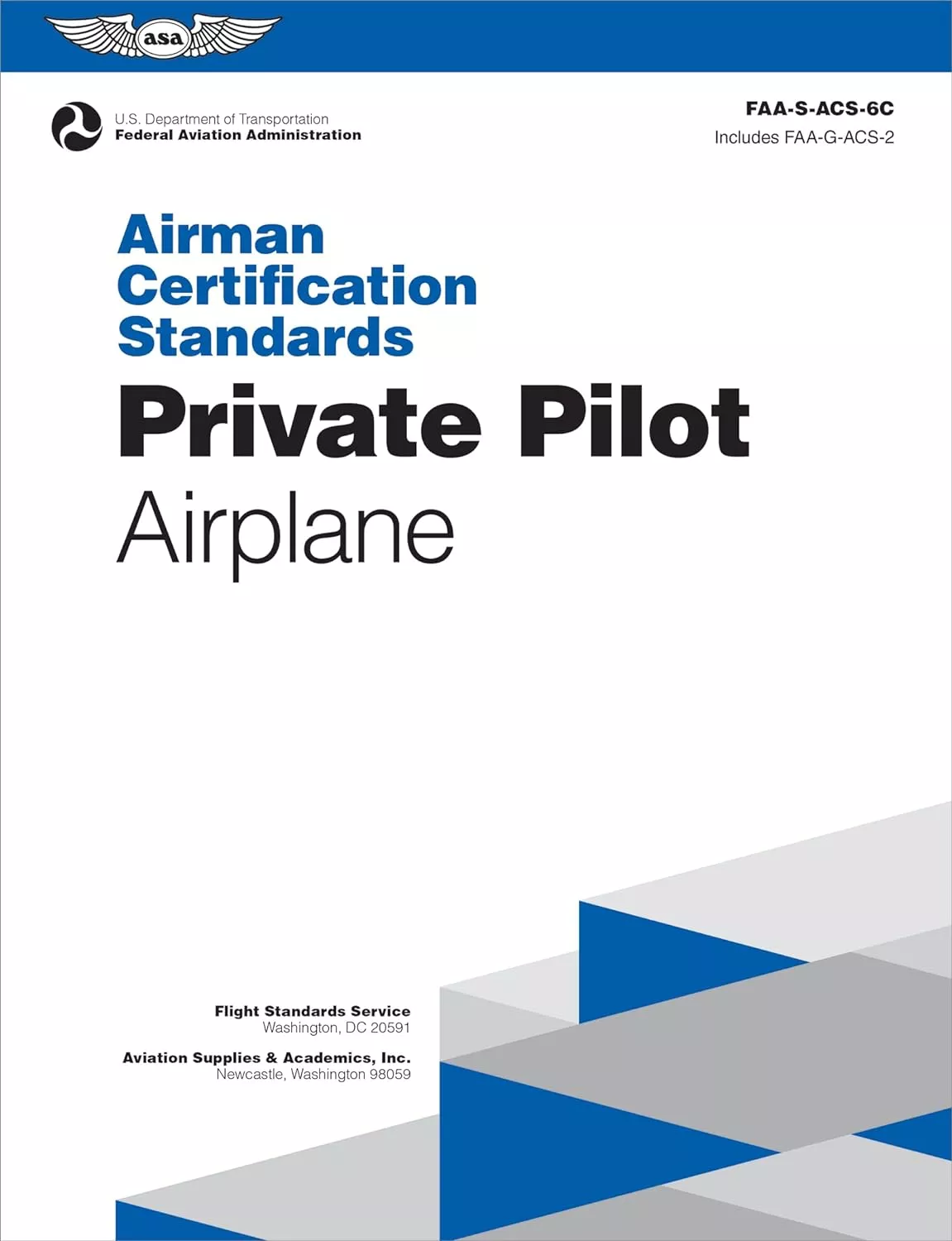
Navigating the complexities of becoming a private pilot can be daunting, yet having the right resources makes the journey smoother. The Airman Certification Standards: Private Pilot – Airplane (2024) is a definitive guide designed to prepare aspiring pilots for certification. This article explores its key features, the importance of the ACS, and how it supports your flight training.
Product Features
| Feature | Description |
|---|---|
| Product Name | Airman Certification Standards: Private Pilot – Airplane (2024): FAA-S-ACS-6C (ASA ACS Series) |
| Manufacturer | Federal Aviation Administration (FAA), U.S. Department of Transportation, Aviation Supplies & Academics (ASA) |
| Publication Date | Effective May 31, 2024 |
| Content | Covers aeronautical knowledge, risk management, and flight proficiency standards for private pilot certification |
| ACS Companion Guide | Includes the Airman Certification Standards Companion Guide for additional applicant information |
| Target Audience | Students, instructors, and evaluators involved in private pilot certification |
Product Overview
| Pros | Cons |
|---|---|
| Comprehensive guidance on FAA standards for aspiring private pilots | May be overwhelming for beginners without prior aviation knowledge |
| Includes both theoretical knowledge and practical skills necessary for certification | Limited illustrations or visual aids for complex concepts |
| Trusted source backed by over 80 years of aviation publishing | Focuses primarily on U.S. certification standards, less applicable for international pilots |
Understanding the Airman Certification Standards
Understanding the Airman Certification Standards is essential for aspiring private pilots, as it serves as a comprehensive framework for achieving certification. The Airman Certification Standards (ACS) offer a structured approach, outlining the knowledge domains, flight proficiency requirements, and risk management techniques needed for success. I find the significance of the ACS lies in its ability to guide me through the complexities of pilot training, ensuring that I develop the necessary skills and understanding to operate aircraft safely and effectively.
As I delved into the latest edition, FAA-S-ACS-6C, I noticed how it reflects the evolution of certification standards over the years. This document not only clarifies the expectations for private pilots but also emphasizes the importance of risk management and decision-making skills within various contexts. Staying updated with the most current standards is crucial for me, as aviation regulations and procedures can shift over time, affecting what is required during training and testing.
In essence, the ACS has become more than just a checklist; it’s a living document that adapts to modern aviation challenges. I encourage fellow pilots to embrace these standards, as they ensure we are equipped with the knowledge and proficiency needed to excel in our flying careers. Staying current will empower me as a pilot, allowing me to approach my training with confidence and clarity.
Preparing for Pilot Certification Using FAA-S-ACS-6C requires strategic approaches to maximize my training effectiveness. I find that integrating the ACS into my study routines is immensely beneficial. One effective method is breaking down the content into manageable sections; I focus on specific knowledge areas and associated skills each week. This practice ensures I’m well-versed in key concepts, which enhances my understanding and retention.
Additionally, during flight lessons, I correlate my practical experiences with the standards outlined in FAA-S-ACS-6C. For example, after a maneuver, I reflect on how it aligns with risk management principles described in the ACS. This not only fortifies my learning but also prepares me for real-world scenarios.
Moreover, I leverage the ACS Companion Guide to augment my preparation. It offers valuable insights and resources that reinforce the theoretical aspects alongside practical skills. I actively review this guide, noting how various flight competencies are directly connected to knowledge requirements.
Ultimately, understanding both theoretical foundations and practical skills is essential for achieving success in exams and checkrides. By committing to this holistic approach, I feel well-equipped to meet the challenges of becoming a private pilot while having a clear understanding of all that the ACS entails.
Preparing for Pilot Certification Using FAA-S-ACS-6C
Preparing for Pilot Certification Using FAA-S-ACS-6C requires a tailored approach that integrates both theoretical knowledge and practical flight skills. To effectively use the ACS, I recommend creating a structured study routine. Start by breaking down each section of FAA-S-ACS-6C, focusing on key concepts, tasks, and associated knowledge areas. This method not only simplifies your learning but also ensures you cover every necessary aspect for your certification.
Incorporating these elements into your flight lessons is equally important. For instance, before each flight, I like to review the relevant tasks outlined in the ACS. This way, I can track my progress and understand how each task directly relates to the practical skills I’m developing in the cockpit. Using a checklist approach can reinforce this link between theory and practice; being aware of what to expect mitigates anxiety during checkrides.
Moreover, investing time in understanding the theoretical aspects of aviation—like aerodynamics, navigation, and regulations—will give you a robust foundation. I often refer to the ACS Companion Guide, as it not only clarifies the contents of the ACS but also offers practical scenarios and tips. This guide enriches my study sessions and enhances my preparedness for exams. By taking this holistic approach, I ensure that I’m not just flying but understanding every flight decision I make, contributing to my success as a private pilot.
Conclusions
The Airman Certification Standards guide serves as an essential tool for anyone aspiring to become a private pilot. By providing comprehensive details on aeronautical knowledge and flight proficiency, it effectively prepares candidates for FAA assessments. As you embark on your aviation journey, having this resource by your side can ensure you meet all necessary standards with confidence.